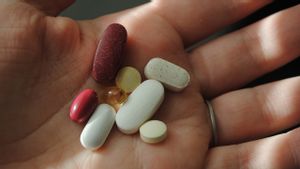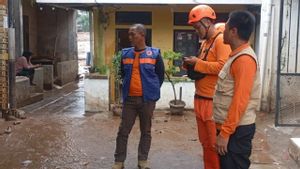JAKARTA - As the largest contributor to the death rate in Indonesia, heart disease has several types that often occur suddenly, including in a healthy body. The type of heart disease that most often results in cardiac arrest is heart rhythm disorders (arithmia) in the form of ventricle fibrillation or fast ventricle takicardia.
In Indonesia, the number of patients who died from sudden heart death is estimated at more than 100,000 people per year. One of the types that appeared was Brugada Syndrome, arrhythmia disorders that occurred in patients without complaints.
Being the largest contributor to sudden heart death in healthy individuals (>20 percent) especially in Southeast Asia, sufferers will experience electrical pulses in cells in the upper right ventilation of the heart, causing the heart to beat quickly.
For handling it, it is necessary to install an implantation cardiobrillator (ICD) device in order to be able to normalize the heart rate so as to avoid fatal risks. With technological advances, the installation of ICD now does not need to be directly in the heart, but under the skin through the Subcutaneous Implantable Cardioverter Defibrillator (S-ICD) method. On March 9, 2024, Heartology became the first heart hospital in Indonesia to install S-ICD in patients with Brugada Syndrome.
Dr. Sunu Budhi Raharjo, SpJP(K), PhD, arrhythmia consultant at Heartology Cardiovascular Hospital said, recently there was a man, 46 years old, referred from Papua for a heart check at Heartology Hospital. Relatively patient without complaints.
"However, from the electrocardiographic examination (EKG), it was found an image of an arithmetic disorder called Brugada Syndrome. People with Brugada Syndrome have defects in this channel and cause the heart to beat very quickly (ventricle fibrillation). As a result, the heart rhythm is disturbed and can be fatal," he said, in Jakarta, Monday, March 25.
"With advances in technology, at this time, ICD installation does not need to be directly in the heart, but it is quite installed under the skin, called S-ICD or subcutaneous Implantable Cardioverter Defibrillator. This is able to give smaller complications. No less important, patient activity is more unperturbed," added dr. Sunu.
Symptoms arising from Brugada syndrome are not much different from other heart rhythm disorders, such as palpitations, fainting, seizures to sudden death. Until now, the cause of Brugada syndrome is not clear. However, genetic factors are believed to make an important contribution.
Dr. Sunu said, from the results of the interview, it was found that the patient's older brother died suddenly in his 50s. During the follow-up examination, it was found that in this patient it was very easy to trigger ventricle fibrillation, a life-threatening superfast heart rhythm. This condition causes the heart to stop at unknown times.
With the installation of an ICD device in someone who is at high risk, when there is a superfast heart rate, the device will automatically stop with a shock energy. That way, the person avoids fatal risks. Therefore, various national and international professional organizations provide class-1 recommendations for the installation of ICD in patients at high risk of KJM.
관련 항목:
Unfortunately, with KJM estimates of >100,000 per year in Indonesia, the implantation of this ICD tool cannot be covered with BPJS financing. In addition to ICD implantation, another implementation of a heart rhythm disorder can be in the form of 3-dimensional ablation catheter actions. Currently, Heartology Cardiovascular Hospital is also equipped with the latest 3D ablation tool, namely, EnsiteX, which will provide high accuracy in the management of various arithmetic disorders.
According to basic health research (RISKESDAS) of the Ministry of Health in 2023, cardiovascular disease is the second largest cause of death in Indonesia after stroke. Deaths caused by heart disease can be in the form of heart attacks or cardiac arrests.
Heart attacks occur whenbrid blood vessels are clogged so that the heart does not get oxygen and nutrients, and it results fatal. The cardiac arrest occurs when the heart electricity pulses super fast (>300 beats per minute), which causes a person to collapse, and can die in less than 10 minutes, so it is often referred to as sudden heart death (KJM).
To prevent the occurrence of KJM, it is necessary to check to identify whether a person has a high risk of experiencing KJM. Here, EKG has an important role as a recording of heart electrical activity into a paper.
"EKG examination is a simple examination that is important in identifying whether a person is at high risk of experiencing KJM or not," said Dr. Sunu.
Good cooperation with various agencies in the country, multidisciplinary collaboration in Heartology is aimed at ensuring that each patient receives quality treatment, with cutting-edge technology and procedures, so that clinical output is obtained that is best for patients.
The English, Chinese, Japanese, Arabic, and French versions are automatically generated by the AI. So there may still be inaccuracies in translating, please always see Indonesian as our main language. (system supported by DigitalSiber.id)














